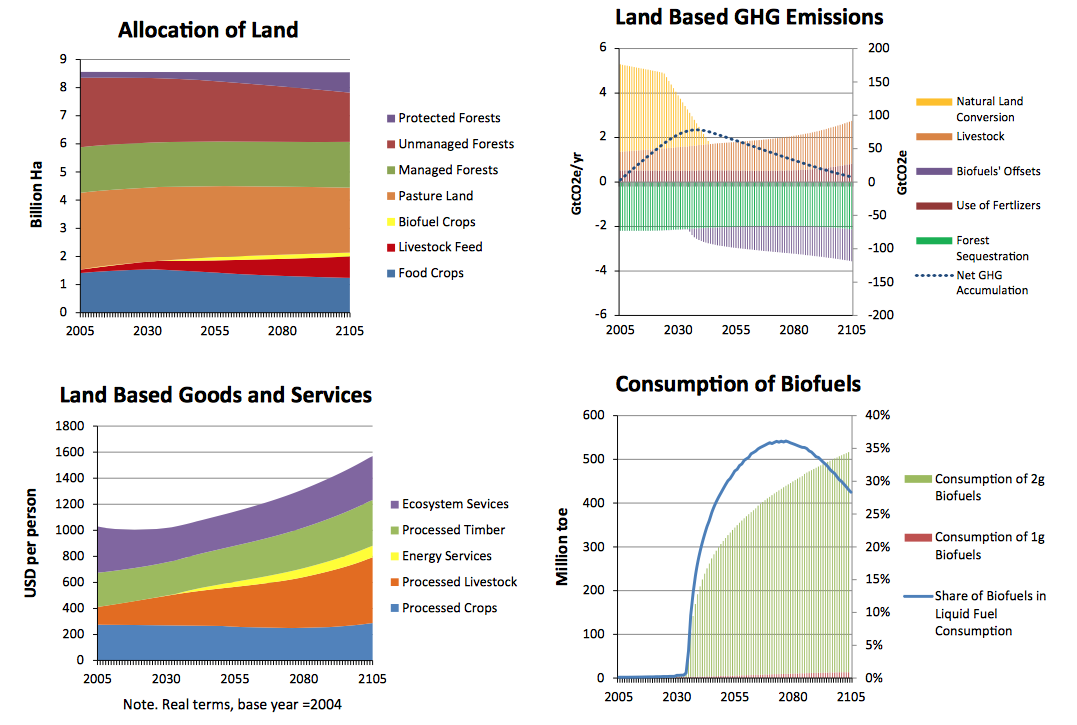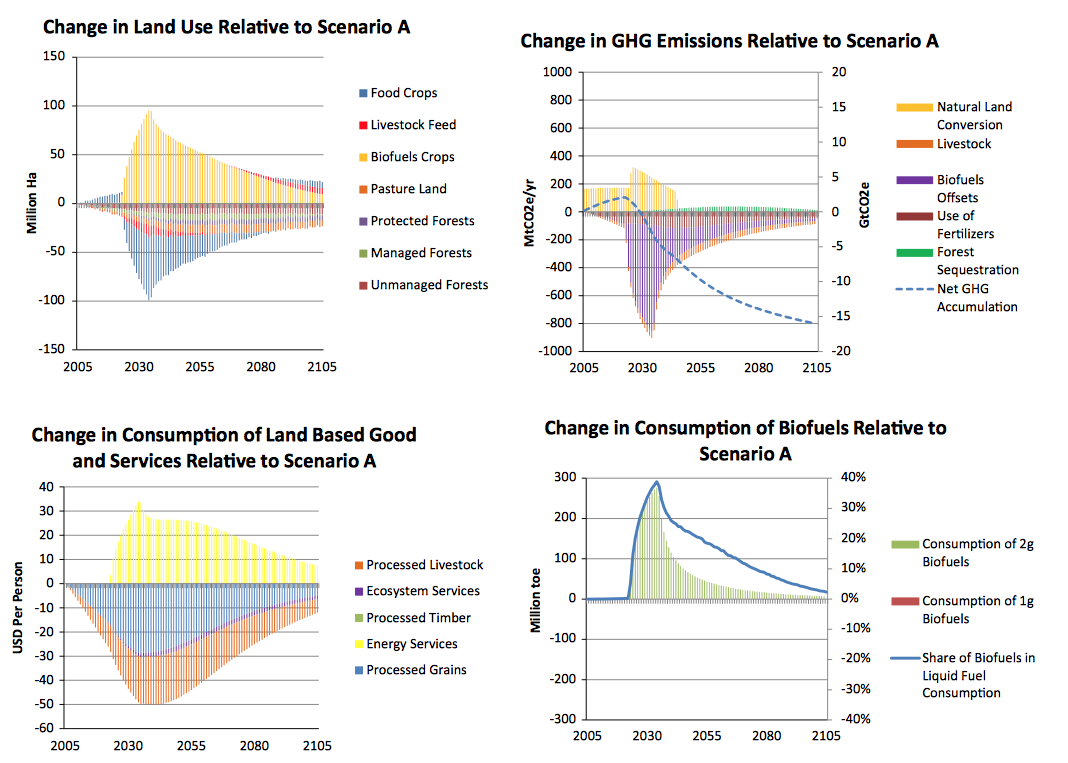Irrigation water
/Summary of study:
Freshwater availability is relevant to almost all socioeconomic and environmental impacts of climate and demographic change and their implications for sustainability. We compare ensembles of water supply and demand projections driven by ensemble output from five global climate models. Our results suggest reasons for concern. Direct climate impacts to maize, soybean, wheat, and rice involve losses of 400-2,600 Pcal (8-43% of present-day total). Freshwater limitations in some heavily irrigated regions could necessitate reversion of 20-60 Mha of cropland from irrigated to rainfed management, and a further loss of 600-2,900 Pcal. Freshwater abundance in other regions could help ameliorate these losses, but substantial investment in infrastructure would be required. Models project that direct climate impacts to maize, soybean, wheat, and rice involve losses of 400-1,400 Pcal (8-24% of present-day total) when CO2 fertilization effects are accounted for or 1,400-2,600 Pcal (24-43%) otherwise.
People:
Neil Best | Joshua Elliott | Ian Foster | Michael Glotter
Alumni:
Delphine Deryng | Alex C. Ruane | Christian Folberth | Christoph Muller | Thomas A. M. Pugh | Erwin Schmid | Kenneth Boote | Dieter Gerten | James W. Jones | Stefan Olin | Sibyll Schaphoff | Hong Yang | Katja Frieler | Markus Konzmann
Flrke M, Wada Y, Eisner S, Fekete BM, Gosling SN, Haddeland I, Khabarov N, Ludwig F, Masaki Y, Olin S, Cynthia Rosenzweig, Satoh Y, Schmid E, Stacke T, Tang Q, Wisser D.
Recent Publications:
Deryng D, Elliott J, Ruane A, Folberth C, Muller C, Pugh T, Schmid E, Boote K, Gerten D, Jones J, Olin S, Schaphoff S, Yang H, Rosenzweig C. Disentangling uncertainties in future crop water productivity under climate change? Submitted to PNAS ISI-MIP special issue, January 2013.
Elliott J, Deryng D, Muller C, Frieler K, Konzmann M, Gerten D, Glotter M, Flrke M, Wada Y, Best N, Eisner S, Fekete BM, Folberth C, Foster I, Gosling SN, Haddeland I, Khabarov N, Ludwig F, Masaki Y, Olin S, Rosenzweig C, Ruane AC, Satoh Y, Schmid E, Stacke T, Tang Q, Wisser D. Constraints and potentials of future irrigation water availability on agricultural production under climate change. Proceedings of the National Academy of Sciences, 2014 ;111(9):3239–3244.























